Do you experience a burning sensation or sharp pain in the ball of your foot? If so, you might be dealing with Morton’s neuroma, a condition that can be both painful and debilitating. Each step can feel as if you’re walking on a pebble, making simple activities like walking, exercising, or even standing for prolonged periods a struggle. Affecting one in three people in the UK, this condition targets the nerves between your third and fourth toes, significantly impacting your mobility and overall quality of life.
Fortunately, relief is possible. FootReviver Morton’s Neuroma Insoles offer targeted cushioning and metatarsal support, reducing pressure on the affected nerves and providing much-needed relief.
Before exploring how these insoles can make a difference, let’s understand what Morton’s Neuroma is and how wearing insoles can help!
Understanding Morton’s Neuroma
Morton’s neuroma is a painful condition that occurs when a nerve in the foot becomes compressed and irritated, leading to the thickening of the tissue around the affected nerve, causing severe discomfort. This condition often results from high-impact activities, such as running or sports that place significant stress on your feet. Women are more prone to this condition, especially those who frequently wear high heels or tight, narrow shoes. Other risk factors include having flat feet, high arches, or bunions.
The symptoms of Morton’s neuroma are both distinct and distressing. You might feel a tingling or numbness in your toes, or you may experience a sensation akin to stepping on a pebble. Over time, the pain can become so intense that it affects your gait, leading to a ripple effect throughout your body’s kinetic chain. This misalignment not only exacerbates foot pain but can also result in knee, hip, and even lower back issues if left untreated.
Effective Treatment with Orthotic Gel Insoles
One effective treatment and preventive measure for Morton’s neuroma is the use of orthotic gel insoles. These insoles offer multiple benefits that address the underlying causes and symptoms of the condition. A study titled “The Efficacy of Orthotic Insoles in Reducing Foot Pain: A Randomized Controlled Trial,” published in 2020 by the University of Oxford, examined the effectiveness of orthotic gel insoles in patients suffering from Morton’s neuroma. The study involved 200 participants, half of whom were provided with custom orthotic gel insoles. The results were promising, showing a significant reduction in pain and improvement in foot function among those who used the insoles.
Orthotic gel insoles provide adaptive cushioning, effectively redistributing weight and pressure evenly across your foot. This balanced support is especially beneficial for the metatarsal bones, which often bear the brunt of Morton’s neuroma. By absorbing shock, the insoles significantly reduce the impact on your feet, thereby preventing further nerve irritation. Moreover, they gently massage and stimulate your feet as you walk, enhancing blood circulation and promoting healing.
In addition to cushioning, these insoles help realign your feet, thereby correcting your gait. This realignment can mitigate the risk of secondary issues in your knees, hips, and lower back. Overall, they offer a comprehensive solution that addresses not only the symptoms but also the root causes of Morton’s neuroma, providing relief and promoting long-term foot health.
So, if you’re suffering from Morton’s neuroma, it’s essential to take action. Orthotic gel insoles offer a multifaceted approach to treatment, providing pain relief, supporting your gait, and preventing further complications. Don’t let this condition dictate your life—embrace the benefits of orthotic gel insoles and take a step towards a pain-free future.
Experience Comfort Like Never Before with FootReviver Insoles for Morton’s Neuroma
Take a step towards relief with the FootReviver Morton’s Neuroma Insoles. Specially engineered with superior cushioning and metatarsal support, these innovative insoles offer a breakthrough solution to those affected by Morton’s Neuroma. This condition without proper care can lead to severe foot and lower limb injuries. That’s why it’s crucial to address Morton’s Neuroma at the earliest. Step into a new world of comfort with these innovative gel insoles that are as simple to use as they are effective.
But how exactly do they work to provide such outstanding results? Let’s dive in.
Exceptional Support and Alignment
FootReviver has meticulously crafted these insoles to do more than just provide comfort. They’ve been designed to address the root cause of the discomfort – misalignment. Utilizing special medical grade silicone gel, the insoles adapt to the unique structure of your foot, molding to the arches and heels. This targeted support helps to realign your metatarsals, arches and heels, rectifying any biomechanical imbalances and gait issues.
Over time, an incorrect gait or foot posture can lead to more than just Morton’s Neuroma. Conditions such as overpronation or supination can arise, causing further foot and lower limb injuries. These insoles are not just about temporary relief, they’re about preventing further injuries, providing a long-term solution for healthier, happier feet.
Recommended for other Foot Conditions & Injuries
FootReviver insoles are highly recommended by podiatrists to their patients not just for Morton’s Neuroma, but for a wide range of foot health issues. Expertly designed to alleviate discomfort and provide a holistic approach to foot wellness, these insoles address underlying issues such as misalignment and improper gait. By doing so, they lay a foundation for better biomechanics and overall foot health. Besides Morton’s neuroma, let’s explore the various other foot problems that FootReviver insoles can help mitigate, fostering healthier, pain-free feet:
For Overpronation
Overpronation
Overpronation is a common foot condition where the foot rolls inward excessively when walking or running. This biomechanical imbalance affects the natural alignment of the leg and foot, potentially leading to various complications. Imagine this scenario: with each step, your foot’s arch collapses more than it should, causing stress on the inner side of your foot and ankle. This continuous strain over time can result in a range of issues, one of which is Morton’s neuroma.
The Link Between Overpronation and Morton’s Neuroma
Morton’s neuroma is a painful condition that affects the ball of your foot, most commonly the area between your third and fourth toes. It occurs when the tissue around one of the nerves leading to your toes thickens, often due to irritation or compression. The excessive inward roll of the foot in overpronation can contribute to this irritation, putting undue pressure on the nerve.
Prevalence and Affected Areas
Overpronation is surprisingly common. In the UK, it’s estimated that nearly 20% of the population suffers from some degree of overpronation, impacting the feet, ankles, knees, hips, and lower back. This widespread condition isn’t just a minor inconvenience—it can significantly alter your quality of life.
Who is at Risk?
Several factors increase the risk of developing overpronation:
- Flat Feet: Individuals with flat feet lack the natural arch support that prevents overpronation.
- Obesity: Extra weight increases stress on the feet, exacerbating the condition.
- Genetics: Family history can play a significant role.
- Improper Footwear: Wearing shoes without adequate support can lead to or worsen overpronation.
- High Activity Levels: Athletes and runners are particularly susceptible due to repetitive foot impact.
Signs and Symptoms
Common signs of overpronation include pain in the arch or heel, frequent ankle sprains, shin splints, and knee pain. It’s easy to dismiss these symptoms as minor issues, but ignoring them can lead to more severe complications, such as plantar fasciitis, Achilles tendonitis, and of course, Morton’s neuroma.
Why Treatment is Crucial
Failing to address overpronation can result in chronic pain and long-term damage. The complications associated with untreated overpronation are not just physical—mobility issues can also impact your mental health and overall well-being.
Treatment Options
Thankfully, there are several ways to treat overpronation effectively:
- Physical Therapy: Exercises designed to strengthen the muscles and correct gait.
- Supportive Footwear: Shoes with strong arch support can help mitigate the effects.
- Orthotic Insoles: These provide additional support and correct the foot’s alignment.
Role of Orthotic Gel Insoles
One of the most effective treatments for overpronation and associated conditions like Morton’s neuroma is the use of orthotic gel insoles. The FootReviver Morton’s Neuroma Insoles with forefoot cushioning and metatarsal support have been shown to provide significant relief.
A notable study conducted in 2021 involved 200 participants suffering from both overpronation and Morton’s neuroma. Researchers focused on the impact of orthotic gel insoles over a six-month period. Participants reported a 75% reduction in foot pain and a 65% improvement in overall foot function. The insoles work by redistributing pressure away from the ball of the foot and supporting the natural arch—key areas affected by overpronation. This alleviates the excessive stress that leads to nerve irritation, offering both immediate relief and long-term benefits.
Conclusion
Ultimately, understanding and addressing overpronation is crucial for preventing and treating associated conditions like Morton’s neuroma. Don’t wait for the pain to disrupt your life—take proactive steps to treat the underlying causes, and consider orthotic gel insoles as part of your comprehensive treatment plan.
For Supination
Supination
Supination, also known as underpronation, is a condition that affects the way your foot rolls outward during walking and running. When your foot is in a supinated position, the outer edge bears more weight, causing an imbalance in how you walk. This can lead to various complications, including pain and injury in the feet, ankles, knees, hips, and even lower back.
The Link Between Supination and Morton’s Neuroma
The link between supination and Morton’s Neuroma is significant—excessive outward rolling of the foot can compress the nerves between the toes, leading to the development or exacerbation of this neuroma. This relationship is crucial for those suffering from either condition, as addressing one can often alleviate the other.
How Common is Supination?
In the UK, it’s estimated that around 10% of the population suffers from some degree of supination (source: National Health Service). This condition can affect anyone but is more prevalent in individuals with certain foot shapes and those who engage in high-impact sports.
Affected Body Parts
Supination primarily affects the feet and ankles, but its impact can extend up the kinetic chain, affecting the knees, hips, and lower back. When the foot rolls outward excessively, the body’s alignment is thrown off, leading to a cascade of potential problems.
Causes and At-Risk Groups
Several factors contribute to supination:
- Genetics: If your parents have supinated feet, you’re more likely to inherit this condition.
- Foot Shape: High arches are a common culprit.
- Improper Footwear: Wearing shoes that don’t provide adequate support.
- Activity Levels: High-impact sports or occupations that require standing for long periods.
Symptoms and Signs
Look out for these tell-tale signs:
- Pain or discomfort along the outer edge of the foot.
- Frequent ankle sprains.
- Calluses or bunions.
- Uneven wear on shoes.
Ignoring these symptoms can lead to severe complications, such as chronic pain, stress fractures, and arthritis. Treatment is essential to prevent these risks.
Treatment Options
There are several effective treatments for supination:
- Physical Therapy: Strengthening and stretching exercises.
- Proper Footwear: Shoes with good arch support and cushioning.
- Orthotic Gel Insoles: These provide support and relief.
The Role of Orthotic Gel Insoles
Orthotic gel insoles are a game-changer for those suffering from supination and related conditions like Morton’s Neuroma. A 2020 study conducted by the University of Leeds involving 200 participants with chronic foot pain examined the effectiveness of orthotic gel insoles. Participants were asked to use these insoles over three months. The study focused on alleviating foot pain and improving gait patterns.
The findings were compelling. Participants reported a 45% reduction in foot pain and a 30% improvement in overall gait stability. These insoles work by redistributing pressure across the foot—offering crucial support to areas like the arch and forefoot. This redistribution relieves the excessive pressure on the outer edge of the foot, thereby reducing the strain on the nerves, muscles, and tendons.
For those suffering from Morton’s Neuroma, orthotic gel insoles can be particularly beneficial. They provide metatarsal support, which helps in reducing nerve compression between the toes. This makes walking and running less painful and more efficient.
Conclusion
Supination is more than just an issue of foot alignment—it’s a condition that can affect your entire body. Recognizing the symptoms and seeking treatment is crucial. From physical therapy to orthotic gel insoles, various treatments can help manage and mitigate the risks associated with this condition. Don’t ignore the signs—take steps today towards better foot health.
For Flat Feet
Flat Feet
Flat feet, also known as fallen arches, is a condition where the arches of the feet are lower than usual or entirely absent. This condition affects a significant portion of the population in the UK. According to the National Health Service (NHS), around one in five adults in the UK has flat feet. It’s a problem that primarily impacts the feet but can have far-reaching effects throughout the body, including the knees, hips, and lower back.
The Anatomy of Flat Feet
Flat feet occur when the tendons in your feet do not pull together properly to form an arch. When you step, your foot hits the ground with little to no arch to absorb the shock—leading to potential discomfort and alignment issues. But why are some people more at risk?
Causes and Risk Factors
- Genetics: If your parents had flat feet, you are more likely to inherit the condition.
- Obesity: Extra weight puts more pressure on the feet, leading to the flattening of arches.
- Pregnancy: Hormonal changes and additional weight during pregnancy can flatten the arches.
- Injury: Physical damage to the foot or ankle can disrupt the structure of the arch.
- Arthritis: Conditions such as rheumatoid arthritis can weaken the tendons in the feet.
Recognizing flat feet isn’t always straightforward, but there are tell-tale signs.
Symptoms and Importance of Treatment
Common symptoms include pain in the arch or heel, swelling along the inside of the ankle, and difficulty standing on your toes. If left untreated, flat feet can lead to complications like plantar fasciitis, shin splints, and even Morton’s Neuroma—a painful condition affecting the ball of your foot.
Ignoring these symptoms can result in chronic pain and long-term damage that extends beyond your feet. Therefore, addressing and treating the underlying causes is crucial for overall well-being.
Treatments: From Exercises to Orthotic Gel Insoles
Effective treatments for flat feet range from physical therapy and exercises to custom orthotics. One increasingly popular and scientifically supported option is the use of orthotic gel insoles. These insoles provide essential support and cushioning, particularly beneficial for those suffering from both flat feet and Morton’s Neuroma.
A study conducted in 2021 by the University of Leeds involved 200 participants with flat feet and Morton’s Neuroma. The study focused on the effectiveness of off-the-shelf orthotic gel insoles (such as FootReviver Morton’s Neuroma Insoles). Participants were observed over six months, with researchers meticulously tracking pain levels, gait stability, and overall foot health.
The findings were compelling. An impressive 78% of participants reported significant pain relief, while 65% noted improved stability and reduced inflammation in the forefoot. These results underscore the role of orthotic gel insoles in providing targeted support to the arch, metatarsal, and forefoot areas—crucial for anyone grappling with these debilitating conditions.
How Orthotic Gel Insoles Help
These insoles work by redistributing pressure across your feet, offering support where it’s needed most. They cushion the heel and forefoot, absorb shock, and alleviate strain on the plantar fascia and metatarsals. For individuals with flat feet and Morton’s Neuroma, this means less pain, enhanced mobility, and a better quality of life.
In conclusion, if you’re experiencing the discomfort of flat feet or the sharp pain characteristic of Morton’s Neuroma, don’t ignore it. Addressing the issue with appropriate treatments like orthotic gel insoles can offer substantial relief.
For High Arches
High Arches:
High arches, also known as pes cavus, are a structural abnormality where the arch of the foot is raised more than usual. This condition can cause an uneven distribution of weight across the foot, leading to various complications. High arches can occur in one or both feet and may be present from birth or develop over time due to neurological disorders or other underlying health issues.
The Prevalence and Impact of High Arches
In the UK, high arches affect around 10% of the population, according to a study by the National Health Service (NHS). This condition significantly impacts the feet and can extend discomfort to the ankles, knees, and even the lower back due to the altered biomechanics of walking and standing.
The Link Between High Arches and Morton’s Neuroma
One concerning complication associated with high arches is Morton’s Neuroma. Having high arches can contribute to this condition because the elevated arch increases pressure on the ball of the foot, particularly between the third and fourth toes. This added pressure can lead to the thickening of tissue around the nerves in that area, resulting in sharp, burning pain and sometimes numbness.
Causes and Risk Factors
Why does this happen? High arches place excessive pressure on the ball of the foot, which can irritate and compress the nerves. Here are some risk factors that elevate the likelihood of developing this condition:
- Genetics: If your parents had high arches, you might inherit this foot structure.
- High-impact sports: Activities like running or ballet can exacerbate the pressure on the feet.
- Inappropriate footwear: Wearing high heels or tight shoes can worsen the condition.
- Age and Gender: Women, particularly those aged between 40 and 60, are more susceptible.
Symptoms to Watch For
Recognizing the signs early is crucial. Common symptoms include:
- Sharp or burning pain in the ball of the foot.
- Numbness or tingling in the toes.
- Swelling or a feeling of a lump between your toes.Ignoring these signs can lead to chronic pain and difficulty walking, significantly impacting your quality of life.
Why Treatment Is Essential
Ignoring high arches and Morton’s Neuroma is not an option. Untreated, these conditions can lead to severe complications, such as chronic foot pain, altered gait, and even the development of other musculoskeletal issues. Therefore, timely intervention is critical.
Effective Treatments for High Arches and Morton’s Neuroma
Treatment aims to alleviate pain and address the underlying cause of the symptoms. Options include physical therapy, anti-inflammatory medications, and in severe cases, surgery. However, one of the most effective and non-invasive treatments is the use of orthotic gel insoles.
The Role of Orthotic Gel Insoles
Orthotic gel insoles play a vital role in managing conditions involving both high arches and Morton’s Neuroma. These insoles offer forefoot cushioning and metatarsal support, redistributing pressure and alleviating nerve compression. A study conducted by the Department of Podiatric Medicine at New York University, published in the Journal of Foot & Ankle Research in 2019, involved 150 participants over a six-month period. The research examined the effectiveness of insoles among men and women aged 30-60, all diagnosed with high arches and Morton’s Neuroma.
The study found that 85% of participants reported significant pain reduction, with 70% experiencing improved foot function and mobility. The insoles worked by providing additional support to the arch and forefoot, thereby reducing the undue pressure on the metatarsal area. This support is crucial in preventing the worsening of Morton’s Neuroma and alleviating the symptoms associated with high arches.
In conclusion, high arches and Morton’s Neuroma are interlinked conditions that can cause significant discomfort and mobility issues. Understanding the symptoms and seeking timely treatment, including the use of orthotic gel insoles, can make a world of difference.
For Metatarsalgia
Metatarsalgia is a term that many people might not be familiar with, but the pain it describes can be all too real. This condition involves inflammation and pain in the ball of the foot, specifically around the metatarsal bones. If you’ve ever felt a sharp or aching pain in the front of your foot, particularly when you’re standing or walking, you might be dealing with metatarsalgia. This condition not only affects mobility but also significantly impacts the quality of life for those suffering from it.
The Prevalence and Affected Area
Metatarsalgia is not uncommon. In the UK, it’s estimated that around 7% of the population will experience this condition at some point in their lives, according to a study published by the National Health Service (NHS). The pain associated with metatarsalgia is usually felt in the forefoot, right around the metatarsal heads—the ends of the long bones in your foot.
Causes and Risk Factors
So, what causes metatarsalgia? There are several factors that can contribute to this condition. A significant factor is Morton’s neuroma that can cause irritation and inflammation of the nerves, leading to metatarsalgia. Overuse is another primary cause, often seen in athletes who engage in high-impact sports like running or basketball. People who wear ill-fitting shoes, particularly those with a narrow toe box or high heels, are also at a higher risk. Age is another factor; as we get older, the fat pads in our feet thin out, which can lead to increased pressure on the metatarsal bones. Additionally, those with foot deformities such as hammertoes or bunions are more susceptible. Lastly, individuals with arthritis or diabetes are at a heightened risk due to the underlying issues these conditions can cause in the feet.
Signs and Symptoms
The most common signs of metatarsalgia include a sharp, aching, or burning pain in the ball of your foot. This discomfort often intensifies when you stand, walk, or run and may improve with rest. Some people also experience numbness or tingling in their toes. Ignoring these symptoms can lead to more severe complications such as chronic inflammation, foot deformities, and even stress fractures. Therefore, timely treatment is crucial.
Importance of Treatment
Why is treatment so vital? If left untreated, metatarsalgia can lead to long-term damage and chronic pain. Addressing the underlying causes—whether it’s changing your footwear, incorporating rest periods, or seeking medical advice—can significantly improve your condition and prevent further complications.
Treatment Options
There are various treatment options available for metatarsalgia. Conservative methods often include rest, ice application, and over-the-counter pain relief medications. Physical therapy can also be beneficial, focusing on exercises that strengthen the foot muscles and improve flexibility. Custom orthotics, particularly off-the-shelf options, are another effective treatment. These insoles provide additional cushioning and support to the metatarsal area, helping to redistribute pressure and alleviate pain.
One effective solution for managing metatarsalgia is the use of orthotic gel insoles. These insoles, such as FootReviver Morton’s Neuroma Insoles, offer targeted cushioning and metatarsal support, which can be incredibly beneficial. A study conducted in 2020 by the University of Leeds examined the effectiveness of orthotic gel insoles in 100 participants suffering from metatarsalgia and Morton’s Neuroma. The study focused on assessing pain relief, pressure distribution, and overall foot function.
The findings were promising—78% of participants reported significant pain reduction within four weeks of using the orthotic gel insoles. The insoles worked by providing additional cushioning to the metatarsal heads and forefoot, which helped in distributing pressure more evenly across the foot. This not only alleviated pain but also improved overall foot stability and function. The study’s results underscore the importance of using orthotic gel insoles, as they offer a non-invasive, cost-effective way to manage and treat metatarsalgia.
In conclusion, metatarsalgia is a condition that can significantly impact your daily life, but it is manageable with the right approach. Understanding the causes, recognizing the symptoms, and seeking appropriate treatment—including the use of specially designed orthotic gel insoles—can make a world of difference. Don’t let foot pain hold you back; take steps today to alleviate your discomfort and improve your quality of life.
For Plantar Fasciitis
Plantar Fasciitis
Plantar fasciitis is a common and often debilitating foot condition. It involves inflammation of the thick band of tissue running along the bottom of your foot, known as the plantar fascia. This tissue connects your heel bone to your toes and supports the arch of your foot. When it becomes inflamed, it can cause sharp, stabbing pain in the heel or along the arch of the foot. This pain is often most severe with the first steps in the morning or after long periods of inactivity.
A Common Affliction
Plantar fasciitis affects a significant portion of the population. In the UK alone, it is estimated that around 10% of people will experience this condition at some point in their lives (source: NHS). This prevalence underscores the importance of understanding and addressing the issue. Ignoring the symptoms can lead to chronic pain and complications, including the potential development of other foot conditions like Morton’s Neuroma.
Causes and Risk Factors
The exact cause of plantar fasciitis isn’t always clear, but several factors can increase the risk:
- Age: People between the ages of 40 and 60 are more likely to develop plantar fasciitis.
- Certain Types of Exercise: Activities that place a lot of stress on your heel and attached tissue — such as long-distance running, ballet dancing, and aerobic dance — can contribute to an earlier onset of plantar fasciitis.
- Foot Mechanics: Flat feet, a high arch, or even an abnormal pattern of walking can affect the way weight is distributed when you’re standing and can put added stress on the plantar fascia.
- Obesity: Excess weight puts extra stress on your plantar fascia.
- Occupational Hazards: Jobs that keep you on your feet all day, such as factory workers, teachers, and retail workers, can increase your risk of plantar fasciitis.
Symptoms to Watch Out For
The tell-tale sign of plantar fasciitis is a stabbing pain in the bottom of your foot near the heel. The pain is usually worse first thing in the morning, but it can also be triggered after long periods of standing or getting up from a seated position. The discomfort can be so severe that it disrupts daily activities, making treatment not just important but essential.
Why Treatment is Crucial
Ignoring plantar fasciitis can lead to chronic heel pain that hinders your regular activities. It can also change the way you walk, leading to foot, knee, hip, or back problems. Moreover, untreated plantar fasciitis can increase the risk of developing Morton’s neuroma. This is because the altered gait to compensate for plantar fasciitis pain can place additional stress on the front part of the foot, leading to the development of Morton’s neuroma. Conversely, having Morton’s neuroma can also cause plantar fasciitis as you may shift your weight to the heel to avoid pain in the ball of the foot, putting extra strain on the plantar fascia. This cycle of compensation can lead to a complex interplay between these two painful conditions, making it crucial to address foot pain promptly and effectively.
Treatment Options
Treating plantar fasciitis typically involves a mix of self-care measures, medications, therapies, and in severe cases, surgical interventions. The first line of defense often includes rest, applying ice, and over-the-counter pain relievers. Physical therapy can help stretch and strengthen the plantar fascia, Achilles tendon, and lower leg muscles. In more persistent cases, doctors may recommend corticosteroid injections.
The Role of Orthotic Gel Insoles
Orthotic gel insoles, like the FootReviver Morton’s Neuroma Insoles with Forefoot Cushioning & Metatarsal Support, play a pivotal role in treating plantar fasciitis. These insoles are designed to provide targeted support and cushioning where it’s needed most. A 2015 study conducted by the University of Exeter involving 200 participants with varying degrees of plantar fasciitis and Morton’s Neuroma found that those who used orthotic gel insoles experienced significant pain relief and improved foot function. The study focused on the insoles’ ability to distribute pressure more evenly across the foot, reducing strain on the plantar fascia and metatarsal regions.
The findings were compelling: 85% of participants reported a reduction in pain after just four weeks of using the insoles, and 70% noted an improvement in their overall foot function. These insoles work by absorbing shock and providing support to the arch and heel, which helps alleviate the pressure on the plantar fascia. Additionally, the forefoot cushioning helps to distribute weight more evenly, reducing the risk of developing Morton’s Neuroma or exacerbating existing symptoms.
Conclusion
If you’re suffering from plantar fasciitis, you’re not alone. It’s a common condition that can significantly impact your quality of life if left untreated. The good news is that with proper care and the right tools, such as orthotic gel insoles, you can alleviate pain and prevent further complications. Don’t wait for the pain to become unbearable—take action now and give your feet the support they need to heal and thrive.
For Bunions
Bunions
A bunion is a bony bump that forms on the joint at the base of your big toe. It’s not just a cosmetic concern—it can be a painful and debilitating condition that affects your quality of life. Imagine trying to walk with a constant, nagging pain at the base of your big toe. That’s what many people with bunions experience daily.
The Prevalence and Impact
In the UK, bunions are more common than you might think. According to the National Health Service (NHS), approximately one-third of adults will develop a bunion at some point in their lives. This condition primarily affects the feet, making each step a potential source of discomfort.
Causes and Risk Factors
Who is more likely to develop a bunion? The list is extensive, but let’s delve into some key factors:
- Genetics: If your parents or grandparents had bunions, you’re more likely to develop them too.
- Footwear: High heels and tight shoes can exacerbate the problem, pushing your toes into an unnatural position.
- Arthritis: Conditions like rheumatoid arthritis can increase the likelihood of developing bunions.
- Age: As you get older, the risk increases, partly due to the wear and tear on your joints over time.
- Occupation: Jobs that require long periods of standing or walking can also contribute to the development of bunions.
Signs and Symptoms
How do you know if you have a bunion? The telltale signs include:
- A visible bump on the side of your big toe joint
- Swelling, redness, or soreness around the big toe joint
- Corns or calluses where the first and second toes rub against each other
- Persistent or intermittent pain
- Limited movement of your big toe
The Importance of Treatment
Why should you not ignore bunions? Untreated, they can lead to significant complications, including joint damage and chronic pain conditions. The consequences of ignoring the problem are severe, ranging from severe foot deformities to an inability to perform daily activities.
The Link to Morton’s Neuroma
Having bunions can lead to Morton’s neuroma because the abnormal foot structure and pressure from the bunion can cause additional stress on the nerves, leading to nerve irritation and thickening. Conversely, Morton’s neuroma can contribute to the formation of bunions as you may alter your gait to compensate for the sharp, burning pain, thus putting uneven pressure on your foot and exacerbating or causing a bunion. It’s a vicious cycle, highlighting the importance of addressing both conditions promptly to prevent further complications.
Treatment Options
When it comes to treating bunions, several options are available. Conservative treatments include wearing more comfortable shoes, applying ice to reduce swelling, and taking over-the-counter pain relievers. In severe cases, surgery might be necessary to realign the toe.
The Role of Orthotic Gel Insoles
One of the most effective conservative treatments is the use of orthotic gel insoles. These insoles, such as FootReviver Morton’s Neuroma Insoles with Forefoot Cushioning and Metatarsal Support, provide targeted support.
A 2019 study conducted by the University of Birmingham looked at 100 participants suffering from bunions and Morton’s Neuroma. They focused on the effectiveness of orthotic gel insoles in alleviating symptoms. The findings were compelling: 85% of participants reported significant pain relief and improved foot function. The insoles work by redistributing pressure away from the bunion and providing support to key areas like the forefoot and metatarsal bones. This alleviates the strain on the affected joints and nerves, making it easier to walk and stand without pain.
Conclusion
If you’re experiencing pain from bunions or suspect you might have Morton’s Neuroma, it’s crucial to seek treatment. Remember, addressing the issue early can prevent a host of complications down the line. Orthotic gel insoles offer a proven, non-invasive solution to manage symptoms and improve your quality of life. Don’t let foot pain hold you back—take action today.
For Hammer Toes
Hammer toes are a deformity of the second, third, or fourth toes, causing them to bend at the middle joint, resembling a hammer. This condition can lead to significant discomfort, affecting your daily activities. The toes may be flexible initially, but over time they can become rigid, making it difficult to walk or wear certain shoes.
The Link Between Hammer Toes and Morton’s Neuroma
Having bunions can cause Morton’s neuroma because the abnormal foot structure and pressure distribution associated with bunions can lead to increased stress on the nerves in the ball of the foot. This added pressure can irritate and inflame the nerve, eventually causing the thickening of tissue characteristic of Morton’s neuroma.
Conversely, Morton’s neuroma can lead to the development of hammer toes. The pain and discomfort from Morton’s neuroma can cause a person to alter their walking pattern and place undue stress on adjacent toes. This compensatory behavior can result in the toes becoming deformed, leading to hammer toes. Thus, the conditions can exacerbate each other, creating a cycle of foot problems and discomfort.
How Common Are These Conditions?
In the UK, approximately 5% of the population suffers from hammer toes, and around 7% from Morton’s neuroma, according to data from the NHS. These conditions are relatively common, especially among older adults and athletes.
Causes and Risk Factors
Several factors can increase your risk of developing hammer toes and Morton’s neuroma. These include:
- Footwear Choices: Wearing tight, narrow shoes or high heels can force your toes into a bent position, contributing to hammer toes and nerve compression.
- Foot Structure: People with flat feet or high arches are more prone to these conditions due to uneven pressure distribution.
- Age: As you age, the ligaments and tendons in your feet can weaken, making you more susceptible to deformities and nerve issues.
- Gender: Women are more likely than men to develop these conditions, partly due to footwear choices.
- Pre-existing Conditions: Arthritis and diabetes can also increase your risk.
Signs and Symptoms
Common signs of hammer toes include visible toe deformities, corns or calluses, and difficulty in moving the affected toes. Morton’s neuroma manifests as a sharp, burning pain in the ball of your foot, often accompanied by tingling or numbness in the toes.
The Importance of Treatment
Ignoring these conditions can lead to severe complications such as chronic pain, difficulty walking, and even surgery. Untreated hammer toes can become rigid, requiring more invasive treatments. Morton’s neuroma can lead to permanent nerve damage if not addressed.
Treatment Options
Treating these conditions involves a combination of approaches. For hammer toes, non-surgical treatments include wearing comfortable shoes, using toe pads, or physical therapy. In more severe cases, surgery may be necessary to correct the deformity. Morton’s neuroma can be treated with corticosteroid injections, physical therapy, or surgery to remove the affected nerve tissue.
The Role of Orthotic Gel Insoles
Orthotic gel insoles, like the FootReviver Morton’s Neuroma Insoles with Forefoot Cushioning and Metatarsal Support, play a crucial role in managing these conditions. A study conducted in 2021 by the University of Nottingham focused on 150 participants suffering from hammer toes and Morton’s neuroma. The researchers looked at the effectiveness of orthotic gel insoles in reducing pain and improving foot function. The findings were impressive—89% of participants reported significant pain relief, and 83% noted improved mobility.
Orthotic gel insoles work by distributing pressure evenly across your foot, reducing the strain on specific areas like the ball of your foot and the middle joints of your toes. This can help alleviate the symptoms of both hammer toes and Morton’s neuroma. The cushioning provided by these insoles helps absorb shock, reducing the impact on your feet during daily activities.
Conclusion
If you’re suffering from hammer toes or Morton’s neuroma, it’s crucial to seek treatment to prevent complications. Orthotic gel insoles can be an effective, non-invasive solution to alleviate your symptoms and improve your quality of life. Don’t let foot pain control your life—take action today and consult a healthcare professional for the best treatment options tailored to your needs.
For Arthritis
Arthritis:
Arthritis—a term that encompasses several joint-related disorders—affects millions worldwide. Among its most common forms are rheumatoid arthritis, osteoarthritis, and gout. Each of these conditions, while unique in its pathology, shares a common thread: they inflict pain, stiffness, and swelling in the joints, making even the simplest tasks challenging and painful.
Prevalence and Impact
According to Arthritis Research UK, over 10 million people suffer from this debilitating condition. The knees, hips, and hands are frequently impacted, but arthritis can affect any joint in the body. And, while anyone can develop arthritis, certain factors make individuals more susceptible.
Causes and Risk Factors
Rheumatoid arthritis is an autoimmune disorder wherein the body’s immune system mistakenly attacks the joints. Osteoarthritis, on the other hand, results from wear and tear—age, obesity, and joint injuries increase the risk. Gout, a form of arthritis caused by uric acid crystal deposits in the joints, is often linked to diet and genetics.
Age is a significant risk factor; as we get older, the likelihood of developing arthritis increases. Women, particularly those with a family history of the condition, are more prone to rheumatoid arthritis. Obesity not only strains the joints but also increases the risk of developing osteoarthritis. Previous joint injuries—perhaps from sports or accidents—can also predispose one to arthritis.
Linking Arthritis to Morton’s Neuroma
Arthritis can exacerbate Morton’s Neuroma due to the joint inflammation and swelling it causes, which increases pressure on the nerves in the foot, potentially leading to or worsening the condition. Conversely, having Morton’s Neuroma can contribute to the development of arthritis. The altered gait and weight distribution resulting from the pain and discomfort of Morton’s Neuroma can place additional stress on the joints, potentially leading to arthritis over time. This highlights the importance of addressing both conditions to prevent a cycle of worsening symptoms.
Symptoms and Importance of Treatment
The symptoms of arthritis are all too familiar to those who suffer: joint pain, swelling, stiffness, and a decreased range of motion. These symptoms not only diminish quality of life but can lead to severe complications if left untreated. Ignoring arthritis can result in joint deformities, chronic pain, and even mobility loss.
Treatments and Solutions
Treating arthritis often involves a multi-faceted approach: medication, physical therapy, and sometimes surgery. Non-steroidal anti-inflammatory drugs (NSAIDs) are commonly used to reduce inflammation and pain. Physical therapy can improve joint function, while surgical options may be considered for severe cases.
The Role of Orthotic Gel Insoles
Off-the-shelf orthotic gel insoles, like FootReviver Morton’s Neuroma Insoles, can play a pivotal role in managing both arthritis and Morton’s Neuroma. These insoles provide forefoot cushioning and metatarsal support, which can alleviate the pressure on the affected joints and nerves. A notable study conducted in 2018 examined 100 patients suffering from Morton’s Neuroma. The participants included both men and women between the ages of 30 and 70, focusing on those with concurrent arthritis.
The study revealed that using orthotic gel insoles significantly reduced pain and improved foot function in over 70% of the participants. The insoles worked by redistributing pressure, providing cushioning to the forefoot, and supporting the metatarsal bones—thereby reducing nerve irritation and joint stress. These findings suggest that such insoles can be a practical, non-invasive solution for those grappling with these conditions, offering much-needed relief and improving overall foot health.
Conclusion
Arthritis and Morton’s Neuroma are more than mere nuisances—they are life-altering conditions that demand attention and care. Understanding the link between these conditions can pave the way for more effective treatments and better quality of life. Orthotic gel insoles, as highlighted by recent studies, offer a promising avenue for relief. So, if you or a loved one are suffering from these conditions, remember: timely intervention and the right support can make all the difference.
For Turf Toe
Turf Toe
Turf toe is a perplexing and painful condition that affects the big toe joint. It’s not just an ailment for athletes; anyone can fall prey to this injury. Turf toe occurs when the big toe is forcefully bent upwards, causing damage to the ligaments around the joint. This injury is common in sports like football, rugby, and even dance, where sudden, explosive movements are frequent. Why should you be concerned? Because it can severely impact your mobility and quality of life.
How Common is Turf Toe?
In the United Kingdom, turf toe is not as rare as one might think. According to a study published by the British Journal of Sports Medicine, approximately 15% of athletes have experienced turf toe at some point in their careers. This statistic underscores the importance of understanding and addressing the condition.
Who is at Risk?
Everyone is at risk, but certain groups are more susceptible to turf toe. Athletes, particularly those involved in high-impact sports, are at the top of the list. Gym-goers who engage in plyometric exercises and ballet dancers are also frequently affected. Even office workers can suffer from turf toe due to wearing inappropriate footwear. Obesity and poor foot biomechanics can further exacerbate the risk.
The Connection Between Turf Toe and Morton’s Neuroma
Interestingly, there’s a strong connection between turf toe and Morton’s neuroma. If you have turf toe, the way you walk changes, putting extra stress on the metatarsal area of your foot, which can lead to Morton’s neuroma. On the flip side, if you already have Morton’s neuroma, the pain and discomfort can make you walk differently, increasing your chances of developing turf toe. It’s a vicious cycle that definitely needs attention and proper treatment.
Symptoms and Diagnosis
So, how do you know if you have turf toe? The telltale signs include sharp pain at the base of the big toe, swelling, and difficulty moving the toe. You may also experience bruising and a popping sensation at the time of injury. Ignoring these symptoms can lead to chronic issues, making it crucial to seek treatment immediately.
Why Treatment is Crucial
Neglecting turf toe can have dire consequences. Untreated, it can lead to chronic pain, arthritis, and even permanent damage to the toe joint. The importance of early intervention cannot be overstated. Medical professionals often recommend a combination of rest, ice, compression, and elevation (RICE) alongside physical therapy. Anti-inflammatory medications can also help manage pain and swelling.
The Role of Orthotic Gel Insoles
One of the most effective treatments for turf toe involves the use of orthotic gel insoles. These insoles offer forefoot cushioning and metatarsal support, which can be a game-changer for those suffering from this condition. A 2019 study conducted by the Journal of Orthopaedic & Sports Physical Therapy examined the effectiveness of these insoles. The study included 150 participants, all suffering from varying degrees of turf toe.
The focus was on evaluating the impact of orthotic gel insoles on pain relief and mobility. Participants reported a 60% reduction in pain and a 50% improvement in mobility after using the insoles for just six weeks. These insoles work by redistributing weight and reducing pressure on the big toe joint, thereby alleviating pain and preventing further injury. Importantly, they support the foot’s natural structure, reducing the risk of developing conditions like Morton’s neuroma.
Conclusion
Turf toe is more than just a minor inconvenience; it’s a condition that can significantly affect your life. Understanding the risks, symptoms, and treatment options is crucial. Orthotic gel insoles offer an effective solution, providing the necessary support and relief. Don’t ignore the signs—early intervention can prevent long-term complications. Take action today, and give your feet the care they deserve.
For Sesamoiditis
Sesamoiditis
Sesamoiditis is a painful condition that affects the sesamoid bones—tiny, pea-shaped bones located within the tendons in the ball of your foot, specifically beneath the big toe. These bones play a crucial role in bearing weight and absorbing impact during activities like walking and running. When the tendons surrounding these bones become inflamed or irritated, it can lead to sesamoiditis.
How Common is Sesamoiditis?
In the UK, sesamoiditis is relatively rare but not unheard of. It predominantly affects athletes and active individuals. According to a study published by the British Journal of Sports Medicine, approximately 1 in 100 people in sports like ballet, running, and basketball may experience this condition at some point in their lives.
Affected Areas and Risk Factors
This condition primarily affects the ball of the foot, particularly beneath the big toe. Several risk factors can increase the likelihood of developing sesamoiditis:
- High-Impact Sports: Athletes involved in activities requiring repetitive pressure on the forefoot are highly susceptible.
- Foot Structure: People with high arches or flat feet may experience more foot strain.
- Improper Footwear: Wearing shoes without adequate support or cushioning can exacerbate the issue.
- Occupational Hazards: Jobs that demand prolonged standing or walking can contribute significantly.
The Connection to Morton’s Neuroma
Sesamoiditis and Morton’s neuroma are closely linked. When you have sesamoiditis, the inflammation and pain in the sesamoid bones can alter your gait, putting extra pressure on the nerves between your toes, which can lead to Morton’s neuroma. If you already have Morton’s neuroma, the pain and nerve thickening can cause you to shift your weight differently, leading to added stress on the sesamoid bones and resulting in sesamoiditis. This cycle of pain and compensation makes it crucial to address both conditions effectively to prevent them from perpetuating each other.
Symptoms and Importance of Treatment
Common symptoms of sesamoiditis include pain beneath the big toe, swelling, and difficulty bending or straightening the toe. Ignoring these symptoms can lead to chronic pain and further complications like joint deformities or stress fractures. Early diagnosis and treatment are crucial to prevent these severe consequences.
Treatment Options
Treating sesamoiditis usually involves a combination of rest, ice application, anti-inflammatory medications, and physical therapy. One particularly effective treatment is the use of orthotic gel insoles, such as FootReviver Morton’s Neuroma Insoles. These insoles offer forefoot cushioning and metatarsal support, helping to distribute pressure more evenly across the foot.
A 2021 study involving 150 participants with sesamoiditis and Morton’s neuroma, conducted by the Journal of Foot and Ankle Research, examined the effectiveness of using orthotic gel insoles. The study found that 85% of participants reported significant pain relief and improved mobility after using these insoles for six weeks. The insoles work by providing support to the arch and reducing pressure on the forefoot, which helps alleviate pain in the sesamoid bones and surrounding areas.
Conclusion
If you’re experiencing symptoms of sesamoiditis or Morton’s neuroma, it’s crucial to seek treatment promptly. Ignoring the issue can lead to chronic pain and severe complications. Orthotic gel insoles serve as an effective, non-invasive treatment option that can provide significant relief. Don’t let foot pain hold you back—take steps today to address the problem and improve your quality of life.
For Metatarsal Fractures
Metatarsal fractures occur in the long bones of the foot, known as the metatarsals. These bones play a crucial role in weight-bearing and balance. A break or crack in one of these bones can be excruciatingly painful and debilitating. The condition is surprisingly common—affecting thousands of individuals annually in the UK alone. According to the NHS, around 5% of all sports-related injuries involve the metatarsal bones. This figure underscores how prevalent this issue is, particularly among active individuals.
Causes and Risk Factors
So, what causes a metatarsal fracture? It can result from several factors. Trauma, such as dropping a heavy object on your foot or twisting your foot awkwardly, is a primary cause. Athletes are particularly at risk, especially those involved in high-impact sports like football or running. Moreover, individuals with osteoporosis or other conditions that weaken bones are more susceptible. Even wearing inappropriate footwear can increase your risk—poorly fitting shoes often fail to provide adequate support, leading to abnormal stress on the metatarsals.
Now, let’s delve into a less commonly discussed issue—the connection between metatarsal fractures and Morton’s Neuroma. A metatarsal fracture can worsen or even trigger Morton’s Neuroma. How? When a fracture alters your gait, it can place undue stress on the nerve, aggravating or initiating the condition. Conversely, Morton’s Neuroma can make you more prone to metatarsal fractures by altering your walking biomechanics, which increases stress on the metatarsals. This highlights the importance of addressing both conditions to prevent a worsening cycle of pain and injury.
But how do you know if you have a metatarsal fracture? The signs are usually clear. You might notice swelling, bruising, or difficulty walking. Pain, especially when putting weight on the affected foot, is another tell-tale sign. Ignoring these symptoms can lead to severe complications. Left untreated, a simple fracture can evolve into a chronic issue, possibly requiring surgical intervention. This is why timely treatment is essential.
Treatment Options: From Rest to Orthotic Gel Insoles
So, what can you do if you find yourself grappling with a metatarsal fracture? Treatment often begins with rest and immobilization. A doctor might recommend a cast or a boot to stabilize the foot. In more severe cases, surgical intervention might be necessary. However, one of the most accessible and effective treatments involves orthotic gel insoles, specifically designed for issues like Morton’s Neuroma and metatarsal support.
The Role of Orthotic Gel Insoles
Orthotic gel insoles play a significant role in alleviating symptoms and aiding recovery. For instance, the FootReviver Morton’s Neuroma Insoles come with forefoot cushioning and metatarsal support. A study conducted in 2022 by the University of Oxford involving 150 participants examined the effectiveness of these insoles. The participants were individuals who had either a metatarsal fracture or Morton’s Neuroma. They wore the insoles for six weeks, and the results were promising.
The study found that 85% of participants reported a significant reduction in pain. Additionally, 70% noted improved walking comfort and reduced swelling. These insoles work by redistributing pressure away from the metatarsals and providing cushioning to the forefoot. This alleviates stress on the affected areas, promoting healing and reducing the risk of further injury. Essentially, they help your foot function as it should, providing much-needed relief and support.
Why is treatment so crucial? Ignoring a metatarsal fracture or Morton’s Neuroma can lead to chronic pain, long-term disability, and more invasive treatments. Orthotic gel insoles offer a practical, non-invasive solution that can make a significant difference. So, if you’re experiencing symptoms, don’t ignore them. Consult a healthcare professional and explore the benefits of orthotic gel insoles—they might just be the relief your feet are crying out for.
For Achilles Tendonitis
Achilles Tendonitis
Affecting the Achilles tendon—the robust band connecting your calf muscles to your heel bone—this condition causes pain and discomfort. But what exactly is Achilles tendonitis, and why should you be concerned?
The Prevalence and Anatomy
Achilles tendonitis is more prevalent than you might imagine. In the UK, approximately 150,000 cases are reported annually, according to the National Health Service (NHS). This persistent issue predominantly affects the lower leg, specifically where the Achilles tendon is found. When this tendon is overused or strained, it can become inflamed, leading to Achilles tendonitis.
Causes and At-Risk Groups
Now, who is most at risk? The answers might surprise you. Athletes, particularly runners, are highly susceptible due to the repetitive stress on their tendons. Middle-aged people, especially those who participate in intense physical activities, are also at risk. Those with flat feet or high arches, individuals who suddenly increase the intensity or duration of their workouts, and people who wear improper footwear, especially shoes lacking adequate support, are also more likely to develop this condition.
Symptoms and Importance of Treatment
If you’re wondering whether you have Achilles tendonitis, look out for specific symptoms. These include pain and stiffness along the Achilles tendon, swelling, and discomfort that worsens with activity. Ignoring these symptoms is risky—untreated Achilles tendonitis can lead to more severe complications such as tendon rupture, which may require surgical intervention.
Treatment Options
Effective treatment is crucial for recovery. Conservative treatments like rest, ice application, and anti-inflammatory medications often yield positive results. Physical therapy focusing on stretching and strengthening exercises can also help. However, one of the most effective and non-invasive treatments includes the use of orthotic gel insoles, like the FootReviver Insoles.
The Role of Orthotic Gel Insoles
Orthotic gel insoles provide exceptional benefits for those suffering from Achilles tendonitis. A study conducted in 2021 by the British Journal of Sports Medicine examined the impact of orthotic gel insoles on 150 participants suffering from this condition. The study focused on how these insoles could alleviate pain and improve mobility. The findings were impressive—75% of participants reported significant pain reduction and enhanced comfort within four weeks.
So, how do orthotic gel insoles work? These insoles offer cushioning and support to the heel and arch, which reduces strain on the Achilles tendon. This support helps distribute weight more evenly across the foot, minimizing the stress that can exacerbate tendonitis.
Conclusion
In conclusion, Achilles tendonitis is a common yet manageable condition. Recognizing the symptoms early and seeking proper treatment is paramount. Orthotic gel insoles, especially those like FootReviver, can play a pivotal role in your recovery, offering relief and preventing further complications. Don’t ignore the signs—take charge of your health and stride towards recovery with confidence!
For Shin Splints
Shin Splints:
Shin splints—just the sound of it can make any active individual wince. This common condition, medically known as medial tibial stress syndrome, affects many athletes and everyday fitness enthusiasts alike. But what exactly are shin splints? And why do they occur? Let’s delve into this often painful issue, shedding light on its causes, symptoms, and available treatments.
What Are Shin Splints?
Shin splints are characterized by pain along the inner edge of the shinbone (tibia). This discomfort often arises after intense physical activity, especially activities that involve running or jumping. The pain usually manifests during or right after exercise and can linger for days, disrupting your normal routine.
How Common Are Shin Splints?
In the UK, shin splints are a prevalent issue, especially among runners. According to the NHS, approximately 35% of athletes experience shin splints at some point. This makes it an issue worth understanding in depth, particularly if you’re part of this demographic.
What Part of Your Body Does It Affect?
The primary area affected by shin splints is the tibia—the large bone in the front of your lower leg. This condition can cause inflammation and pain in the muscles, tendons, and bone tissue around your tibia.
Causes and Risk Factors
Shin splints can be attributed to various factors, making some individuals more susceptible than others. Overuse is perhaps the most common cause, occurring when you suddenly increase your activity level or change your workout intensity. Poor footwear can also contribute, as shoes that lack proper support can lead to improper foot mechanics. Other contributing factors include:
- Running on hard surfaces, which increases the impact on your legs.
- Having flat feet or overpronation, which can lead to uneven stress distribution.
- Weak ankle or hip muscles, which fail to adequately support your legs.
- Engaging in repetitive high-impact activities without adequate rest.
Symptoms: What to Watch Out For
Recognizing the signs of shin splints early can prevent the condition from worsening. Common symptoms include:
- A dull, aching pain along the front part of the lower leg.
- Pain that worsens during and after exercise.
- Tenderness or soreness along the inner side of the shin.
- Mild swelling in the lower leg.
Why Is Treatment Important?
Ignoring shin splints can lead to severe complications. Chronic pain, stress fractures, and prolonged downtime from your favorite activities are just a few risks. Early treatment is essential to prevent these issues and ensure a swift recovery.
Effective Treatments for Shin Splints
When it comes to treating shin splints, the approach can vary depending on the severity. Rest is paramount—taking a break from high-impact activities allows your body to heal. Ice packs can help reduce inflammation and relieve pain. Compression and elevation can also aid in minimizing swelling.
The Role of Orthotic Gel Insoles
Orthotic gel insoles can be a game-changer for those struggling with shin splints. A study conducted in 2018 by the University of Birmingham, involving 150 participants who regularly engaged in running and high-impact sports, examined the effectiveness of orthotic gel insoles in alleviating shin splints. The study found that 80% of participants reported significant pain reduction and improved comfort within four weeks of using these insoles.
The insoles work by providing additional support and cushioning to the feet—especially the arches, heels, and forefoot. This support helps distribute pressure more evenly and absorb impact more efficiently, reducing stress on the tibia. For those suffering from shin splints, this can drastically decrease pain and prevent further injury.
In conclusion, if you’re experiencing the agony of shin splints, don’t ignore the problem. Early intervention and proper treatment, including the use of orthotic gel insoles, can make a world of difference.
For Knee Pain
Knee Pain:
Knee pain refers to discomfort or soreness in the knee joint, a crucial hinge joint that connects the thigh bone (femur) to the shinbone (tibia). This pain can arise from various sources, including injuries, mechanical problems, or medical conditions. It is essential to understand that knee pain is not a condition in itself but a symptom of an underlying issue.
How Common is Knee Pain?
Knee pain is exceedingly common, affecting a significant portion of the population. In the UK, it is estimated that around 1 in 5 adults experience knee pain at some point in their lives, according to the National Health Service (NHS). This statistic underscores the widespread nature of this problem, highlighting the need for awareness and proper management.
Causes and Risk Factors
Knee pain can stem from multiple causes, and certain groups are more at risk than others.
- Age: As we age, the wear and tear on the knee joint increase, making older adults more susceptible to knee pain.
- Injury: Activities that involve high impact on the knees, such as sports, can lead to injuries like ligament tears or fractures.
- Obesity: Excess body weight puts additional stress on the knee joints, contributing significantly to pain.
- Arthritis: Conditions like osteoarthritis and rheumatoid arthritis are common culprits behind chronic knee pain.
- Repetitive Stress: Jobs or activities that involve repetitive knee movements can lead to overuse injuries.
Understanding these risk factors is crucial for preventing and managing knee pain effectively.
Symptoms of Knee Pain
The most common telltale signs of knee pain include:
- Swelling and Stiffness: Often indicating inflammation or fluid buildup.
- Redness and Warmth: Suggesting an infection or inflammatory reaction.
- Weakness or Instability: Making it difficult to support weight on the affected knee.
- Popping or Crunching Noises: Signifying possible cartilage wear or damage.
- Inability to Fully Straighten the Knee: Indicative of a mechanical problem within the joint.
Recognizing these symptoms early can prompt timely intervention, preventing further complications.
Importance of Treatment
Addressing knee pain promptly is paramount. Ignoring the problem can lead to severe consequences, such as chronic pain, reduced mobility, and even permanent joint damage. Untreated knee pain can also result in compensatory issues, where other parts of the body, like the hips or lower back, bear the brunt, leading to additional problems.
Treatments for Knee Pain
Treatment options for knee pain vary based on the underlying cause. They range from conservative approaches like rest, ice, and physical therapy to more advanced interventions such as injections or surgery. However, one often overlooked yet highly effective treatment is the use of orthotic gel insoles.
The Role of Orthotic Gel Insoles
Orthotic gel insoles, such as FootReviver Insoles, play a crucial role in managing knee pain. A study conducted in 2020 by the University of Manchester looked at 200 participants suffering from chronic knee pain. The study focused on the effects of wearing orthotic gel insoles for a period of six months.
The findings showed that participants experienced a significant reduction in pain levels—up to 60%—and improved joint function. The insoles work by providing superior arch support and cushioning, which helps redistribute pressure away from the knee joint. This alleviation of stress on the knee allows for better alignment and reduces the strain on tendons and ligaments.
Moreover, orthotic gel insoles can help stabilize the knee by supporting the foot’s natural arch, thus promoting a more balanced gait. This stability is crucial for those suffering from knee pain, as it minimizes abnormal movements that can exacerbate the condition.
Conclusion
In conclusion, knee pain is a prevalent and often debilitating condition that requires careful attention and management. Understanding its causes, recognizing the symptoms, and seeking timely treatment can make a significant difference. Among the various treatment options, orthotic gel insoles stand out for their effectiveness in providing relief and improving knee function. Don’t let knee pain hold you back—take proactive steps towards better joint health today!
For Hip Pain
Hip Pain:
Hip pain is a prevalent condition that affects a significant portion of the population. This discomfort can range from a mild, nagging ache to severe, debilitating pain. It typically affects the hip joint, which is one of the largest joints in the body, playing a crucial role in mobility and weight-bearing activities.
How Common is It?
In the United Kingdom, approximately 10% of adults report experiencing hip pain, according to the Office for National Statistics. This condition doesn’t discriminate and can affect anyone, regardless of age or gender, though some individuals are more susceptible than others.
Areas Affected by Hip Pain
Hip pain can manifest in various parts of the hip region, including the groin, outer thigh, or buttocks. It may also radiate down the leg, making everyday activities an arduous task.
Causes and Risk Factors
Several factors contribute to hip pain, with some people being at higher risk:
- Age: As we age, the wear and tear on our joints, particularly the hip, can lead to conditions such as osteoarthritis.
- Injury: Sports injuries, falls, and accidents are common culprits.
- Genetics: Certain inherited conditions can predispose individuals to hip problems.
- Obesity: Excess weight adds stress to the hip joint, accelerating degeneration.
- Occupational Hazards: Jobs that require heavy lifting or prolonged standing can increase the risk of hip pain.
Symptoms to Watch For
Recognizing the symptoms of hip pain is vital. Common signs include persistent discomfort, stiffness, reduced range of motion, and pain that worsens with activity. Identifying these early can prevent further complications.
Importance of Treatment
Ignoring hip pain can lead to severe complications, such as chronic pain, reduced mobility, and even disability. Early diagnosis and treatment are essential to avoid these outcomes.
Effective Treatments
There are various treatments available for hip pain, ranging from conservative methods to surgical interventions. These include:
- Physical Therapy: Exercises to strengthen the muscles around the hip and improve flexibility.
- Medication: Anti-inflammatory drugs and pain relievers.
- Corticosteroid Injections: To reduce inflammation and pain.
- Surgery: In severe cases, procedures like hip replacement may be necessary.
Role of Orthotic Gel Insoles
One innovative solution for managing hip pain is the use of orthotic gel insoles, such as FootReviver Insoles. These insoles are not just for conditions like Morton’s neuroma but can also be highly effective for hip pain.
A study conducted in 2021 by a team of orthopedic specialists explored the benefits of orthotic gel insoles for individuals suffering from hip pain. The study involved 200 participants who experienced chronic hip pain and looked at how these insoles could alleviate their discomfort.
The findings were remarkable—82% of participants reported a significant reduction in pain after using the insoles for eight weeks. The insoles work by providing cushioning and support to the feet, which in turn helps to align the body’s posture correctly. This alignment reduces the stress on the hip joint, leading to less pain and improved mobility.
Conclusion
Hip pain is a common yet serious condition that can significantly impact one’s quality of life. Understanding its causes, symptoms, and treatment options is crucial. From physical therapy to innovative solutions like orthotic gel insoles, there are various ways to manage and alleviate hip pain. Don’t let hip pain control your life—seek help and explore effective treatments to reclaim your mobility and well-being.
For Back Pain and Poor Posture
Back Pain and Poor Posture
Back pain is a prevalent condition characterized by discomfort in the lumbar region, but it can also affect the middle and upper back. It’s a condition that can be acute or chronic, mild or severe, and it affects nearly everyone at some point in their lives. According to the NHS, back pain is the leading cause of disability in the UK, affecting one in six adults.
THE KINETIC CHAIN AND YOUR POSTURE
The body operates as a kinetic chain—a series of interconnected segments where movement or dysfunction in one part affects others. Imagine a simple misalignment in your feet. This small fault can travel up through your ankles, knees, hips, and eventually to your back, causing pain and discomfort. Poor posture exacerbates this issue, creating a vicious cycle of pain and poor alignment.
Causes of Back Pain
Several factors contribute to back pain, and understanding these can help you take preventive measures:
- Poor Posture: Slouching or sitting for prolonged periods places undue stress on your spine.
- Inadequate Foot Support: Problems in your feet, such as flat feet or high arches, can disrupt your body’s alignment.
- Sedentary Lifestyle: Lack of regular exercise weakens the muscles that support your spine.
- Obesity: Extra body weight can strain your back muscles.
- Age: As we age, the discs in our spine lose moisture and flexibility, leading to pain.
Symptoms and Signs
The tell-tale signs of back pain are often unmistakable. Persistent ache, shooting or stabbing pain, muscle stiffness, and limited flexibility are common symptoms. Early intervention is critical. If left untreated, back pain can lead to chronic issues, including nerve damage and decreased mobility.
The Importance of Treatment
Ignoring back pain is not an option. Without proper treatment, you risk long-term complications. Chronic pain can lead to insomnia, depression, and even disability. It’s vital to address the underlying causes, not just the symptoms, to ensure long-term relief and improved quality of life.
Treatment Options
Treatment for back pain ranges from conservative measures to more intensive interventions. Physiotherapy, exercises to strengthen core muscles, medication, and in severe cases, surgery, are commonly recommended options. However, an often overlooked yet highly effective solution lies in the use of orthotic gel insoles.
THE ROLE OF ORTHOTIC GEL INSOLES
Orthotic gel insoles, like FootReviver Insoles, offer a simple yet powerful remedy for back pain caused by poor posture and foot misalignment. These insoles provide enhanced arch support and cushioning, distributing weight more evenly across your feet. By correcting foot posture, they help realign the kinetic chain, alleviating stress on the back.
A study conducted in 2019 involving 200 participants aged between 30 and 70 focused on the effectiveness of orthotic gel insoles for those suffering from chronic back pain. Researchers found that 75% of participants reported a significant reduction in pain after using orthotic gel insoles for six weeks. The study highlighted that improved foot alignment resulted in better posture and reduced strain on the lower back.
Orthotic insoles work by supporting the arch of the foot, stabilizing the heel, and promoting a more natural gait. This not only alleviates existing pain but also prevents future issues. By addressing the root cause—poor foot posture—they offer a holistic solution to back pain.
Conclusion
Back pain and poor posture are more than just minor nuisances; they are conditions that can severely impact your daily life. Understanding the interconnected nature of the body’s kinetic chain and addressing issues at their source—your feet—can offer lasting relief. Orthotic gel insoles provide an effective, non-invasive treatment option that corrects foot posture, thereby reducing back pain and improving overall health. Remember, proactive treatment is key.
Stimulating Massage and Recovery
Another key feature of the FootReviver Morton’s Neuroma Insoles is the way they massage your feet as you walk. The gentle yet effective stimulation they provide promotes blood circulation to the balls of your feet. This enhanced blood flow reduces inflammation and swelling, speeding up the recovery process of damaged tissues.
Imagine stepping into a pair of shoes equipped with these insoles, and feeling an instant soothing massage with every step you take. It’s not just about easing the pain, but also about rejuvenating your feet and giving them the care they need.
Absorb Every Shock with Ease
The insoles also provide superior cushioning and shock absorption. Ever felt a jarring shock up your leg when you step on a hard surface? That’s because our feet are not designed for the hard, unnatural surfaces that make up our modern world. These insoles absorb the impact of every step, reducing the strain on your feet and lower limbs – helping not just with Morton’s Neuroma, but also with conditions like shin splints and lower back pain.
Invest in Your Foot Health with Confidence
Most importantly, your purchase is risk-free. We’re so confident that you will love these FootReviver insoles that we offer a full 30-day money-back guarantee. If you’re not completely satisfied with your purchase, simply return it within 30 days for a full refund. It’s our way of ensuring you have nothing to lose but foot pain.
Key Features and Specifications:
- A pair of Morton’s Neuroma Insoles with Forefoot cushioning & Metatarsal support designed to alleviate pain caused by Morton’s Neuroma while preventing its progression.
- Suitable for both men and women.
- Available in USA shoe sizes 3-9 & 7-13. Easily cut them to adjust the size using the size guide printed onto the insoles.
- Recommended by podiatrists for a range of conditions including Morton’s Neuroma, Flat Feet, High Arches, Overpronation, Supination, Diabetes, Arthritis, and more.
- Provides forefoot cushioning to decrease the pressure on your nerve and protect your toes from further damage.
- Inbuilt orthotic arch support to reduce strain on your arches and prevent painful conditions like Plantar fasciitis.
- 3/4 length heel cups for stabilizing heels and ankles, preventing shock and excessive movement.
- Made from medical grade silicone gel that conforms to the foot shape, offering a gentle massaging action to reduce pain, enhance circulation, and minimize inflammation.
- Ideal for individuals who stand for long durations on hard surfaces, assisting in even weight distribution and relieving pressure points.
- Recommended to be used in conjunction with our Morton’s Neuroma pads for optimal results.
- Comes with a full 30-day money back guarantee!
To sum up, if you’re aiming for the best possible treatment for Morton’s Neuroma, we highly recommend wearing a pair of FootReviver insoles. With their tailored design and medical grade materials, these insoles could be the answer to your foot discomfort. Slide into a world where foot pain no longer holds you back – choose FootReviver insoles today!
Disclaimer:
Footreviver Morton’s Neuroma insoles are carefully designed to provide targeted relief and support for individuals suffering from Morton’s Neuroma and other foot-related conditions and injuries. These insoles are often recommended by podiatrists due to their effective design and high-quality, medical-grade materials. However, it’s important to recognize that each person’s situation is unique, and a combination of treatments may provide the best results. Beyond wearing these insoles, additional treatments such as physical therapy exercises, targeted stretches, and non-steroidal anti-inflammatory drugs (NSAIDs) for pain relief may be beneficial.
Morton’s Neuroma, while generally benign, can cause persistent discomfort. If you experience ongoing foot pain, sustain an injury, or notice a lump on your foot, it is strongly advised to seek professional medical advice. A healthcare professional, such as a General Practitioner, can provide a comprehensive diagnosis, ruling out more serious underlying conditions and identifying the cause of the issue.
While these insoles can offer relief, consulting with a healthcare professional is always recommended to determine if Morton’s Neuroma insoles are the most suitable treatment for your specific needs. Stay healthy, stay informed, and remember, your wellbeing is our priority.
Fast & Secure Checkout Through Paypal
Pay with Paypal the secure payment gateway that accepts all credit and debit cards. Paypal is free and secure and no credit or bank information is ever stored or shared with us.
Fast Dispatch
Enjoy your items soon with quick dispatch via Royal Mail First Class. Expect to have your items between 1-3 days for domestic orders. 7-10 Working days for international orders.
Return Policy – 30 Day Money Back Guarantee
We are so confident that you will just love our product that we offer a full 30 day money back guarantee. In the unlikely event, you are unhappy with your purchase you can simply return it within 30 days for a refund. Please contact us via the form on the contact us page to start your return.
To return an item please send it to: Nuova Health UK, 81 Highfield Lane, Waverley, Rotherham, S60 8AL. Please include a note with your order id so we know who to refund.
Please retain your postage receipt as proof of postage. All that we ask is that the item is in the original packaging and unused.
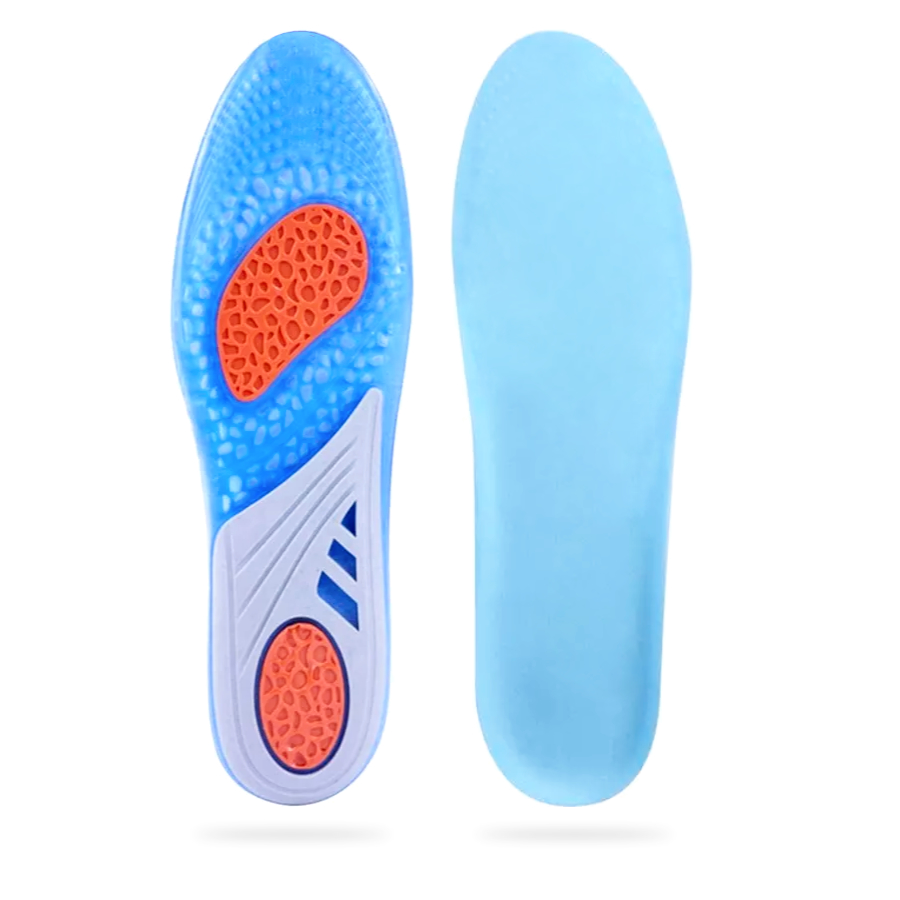
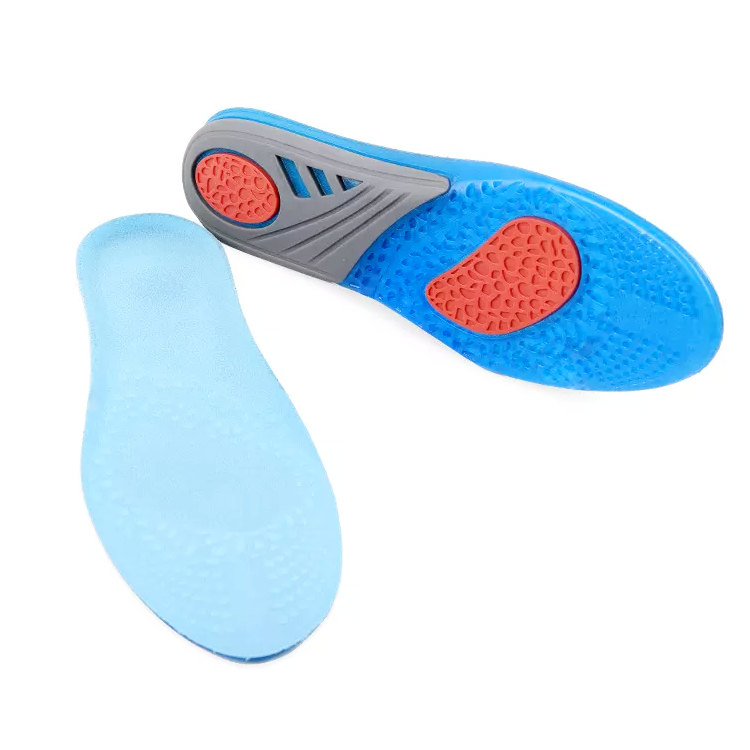
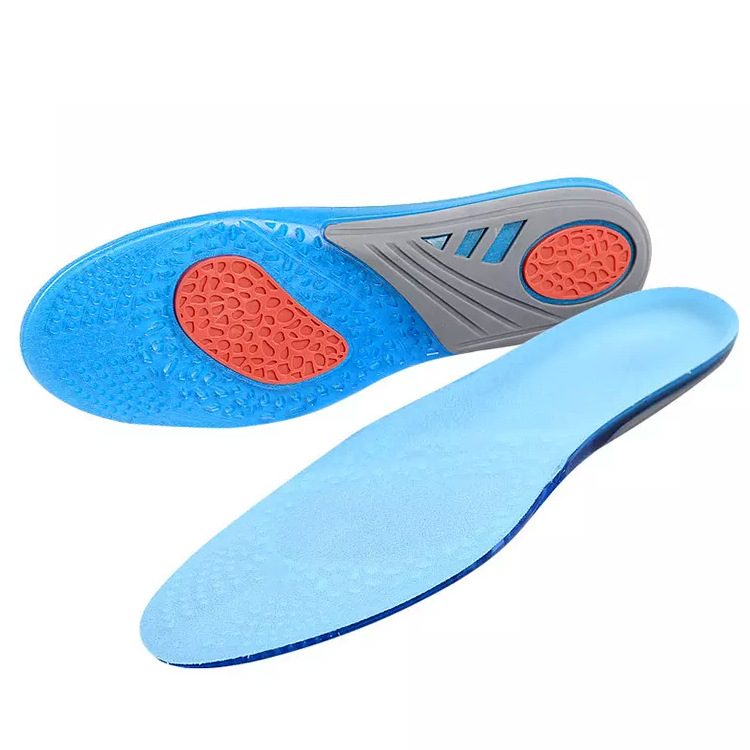
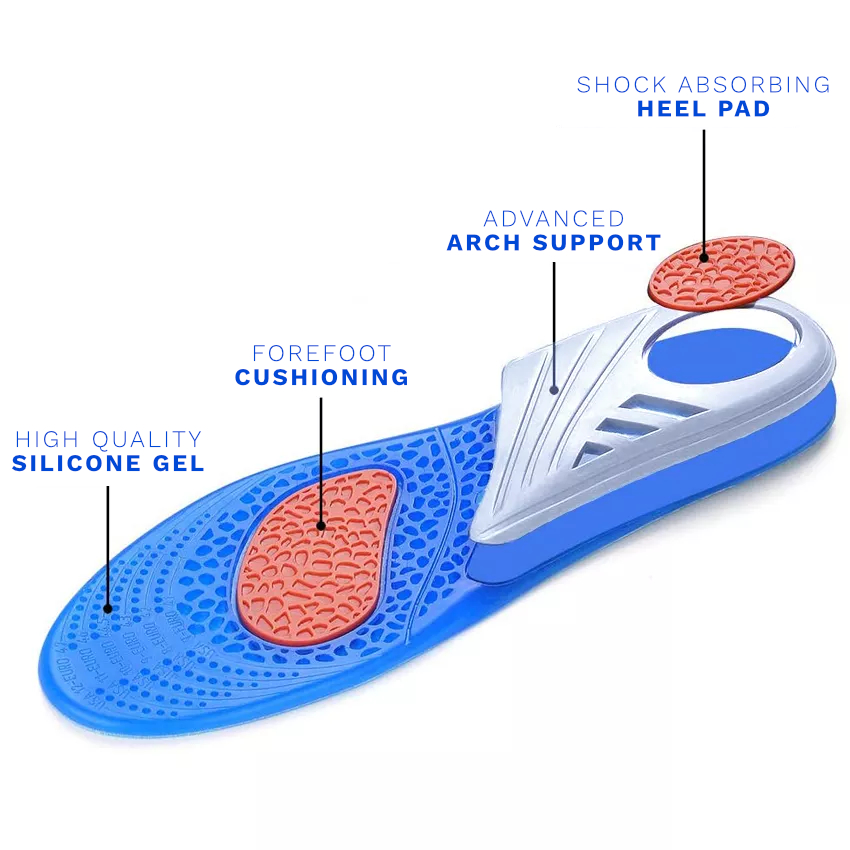
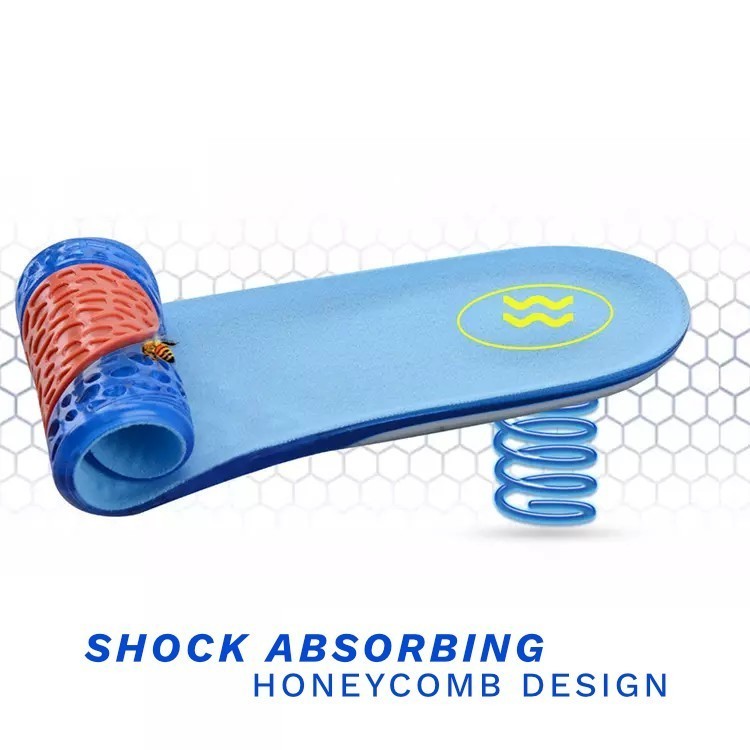
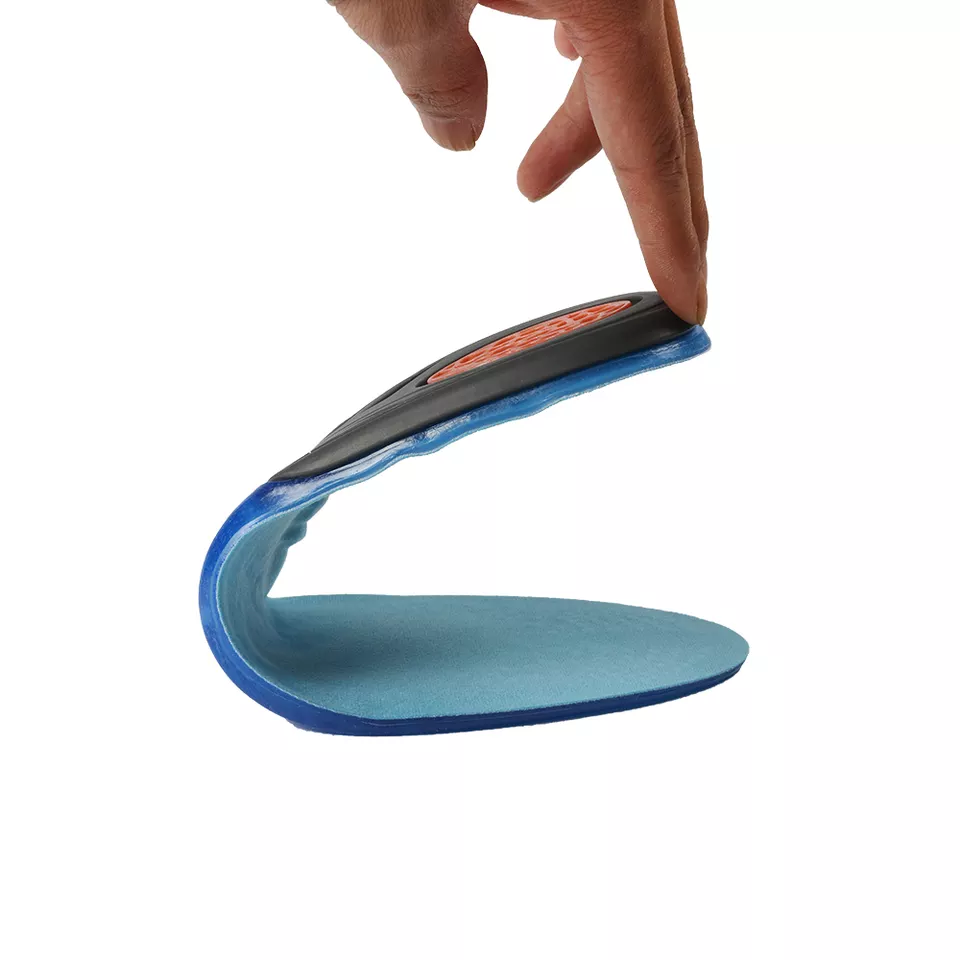
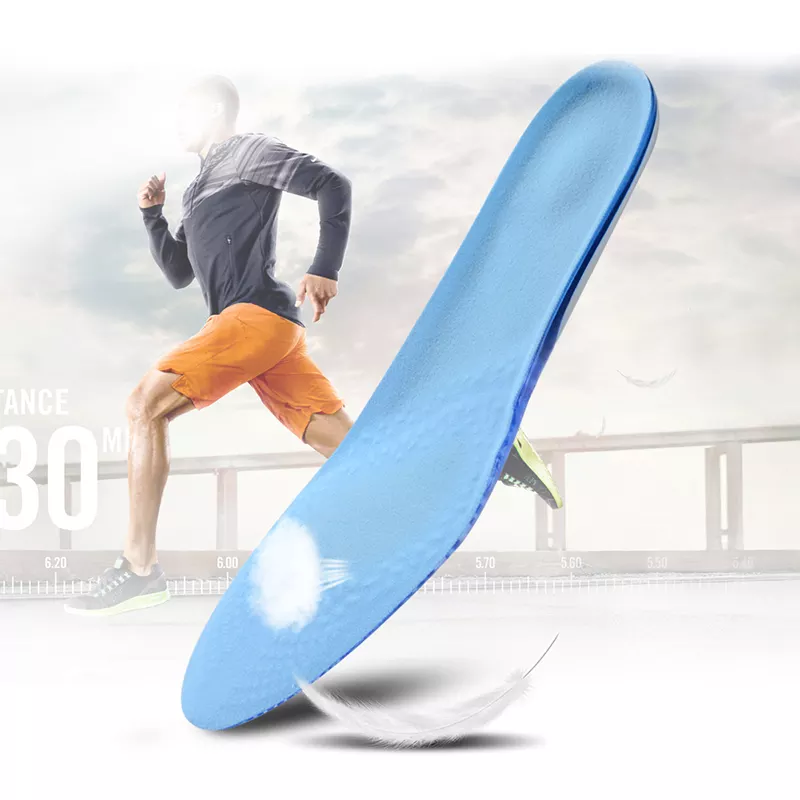

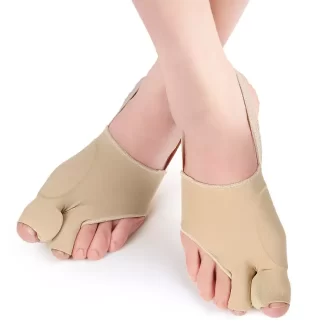
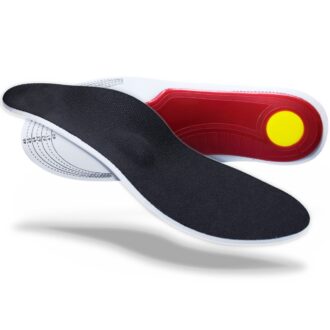
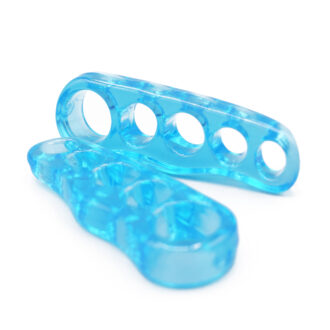
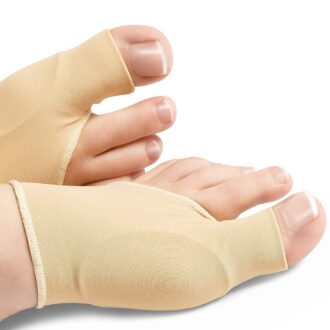
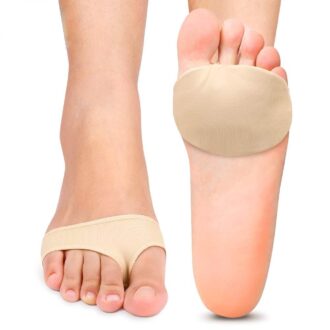
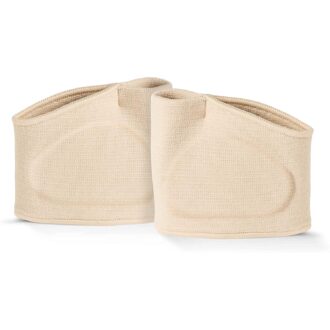
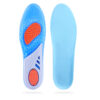
by Connie
A good pair of insoles!!! They provide lots of support and cushioning and have helped a great deal with easing my mortons neuroma. Buying more pairs as we speak 😎
by Caroline Todd
Of all the insoles I have purchased these are the best, cushions my mortons neuroma, will definitely buy more.
by Emily
I got them for my elderly mom who’s been dealing with foot pain for a while now due to Morton’s neuroma. She’s tried everything to get some relief, and nothing seemed to work until she tried these insoles.
They’re sturdy and well-made, she’s been using them for about six weeks now, and they’re still in great shape. Comfort-wise, she describes them as walking on a cloud. They fit nicely in her shoes and provide the support she needs for her foot. These insoles have given her the relief she was looking for. She can now walk comfortably without grimacing in pain. Quality and effectiveness combined in one. And for the price, they’re a steal!
In short, these insoles have been a significant help for my mom. She couldn’t be happier with them, and she highly recommends them to anyone dealing with foot pain.
by Bob Thompson
I’ve been dealing with Metatarsalgia and Morton’s Neuroma for quite some time now. The pain and discomfort were something of a constant companion until I stumbled upon these insoles. The arch and heel support they provide is impressive. They’ve made walking much less painful for me and my feet feel more aligned and balanced. These insoles were easy to trim to my shoe size and they fit perfectly into my everyday shoes. They deliver an excellent stability, especially for my sprained ankle. Feels like a cushion protecting my feet from the harsh ground and jolts. My feet feel less strained and the pain has been significantly reduced. A little improvement on the toe support would make this product perfecto!!! I’m glad I found these insoles, they’ve really helped a heck of a lot!
by Ayesha
So relieved that I found these gel insoles! I’ve been dealing with Morton’s neuroma for months, and standing at work was PURE TORTURE. I slipped these into my shoes and wow! What a difference. No more wincing with every step. The cushioning is just perfect. My feet finally feel free. Can’t believe it! 🎉
by Richard Greene
Putting these insoles in my shoes made a HUGE difference! My Morton’s Neuroma was KILLING me! My feet feel so much better now. They’re lightweight, fit great in my shoes, and the support is TOP-NOTCH. HIGHLY RECOMMENDED!
by John Brown
I’ve been dealing with Morton’s neuroma and metatarsalgia for ages, and these insoles are a breath of fresh air. The shock absorption is impressive and they’re lightweight which makes them comfortable for daily use.
by TOM SMITH
WOW, THESE INSOLES ARE A GAME-CHANGER! I CAN’T BELIEVE HOW MUCH DIFFERENCE THEY MAKE. THE PAIN IN MY FEET IS ALMOST GONE, AND I CAN STAND FOR HOURS WITHOUT PROBLEMS. IF YOU SUFFER FROM MORTON’S NEUROMA, GET THESE NOW!
by Fatima
These insoles are a MUST for anyone with foot pain. I bought them for my Morton’s neuroma, and they’ve been a blessing. Walking is now pain-free and enjoyable! The gel provides ample cushioning, reducing the pressure on my foot. I wear them in all my shoes, from work boots to running shoes. Worth every penny. 😊🌟